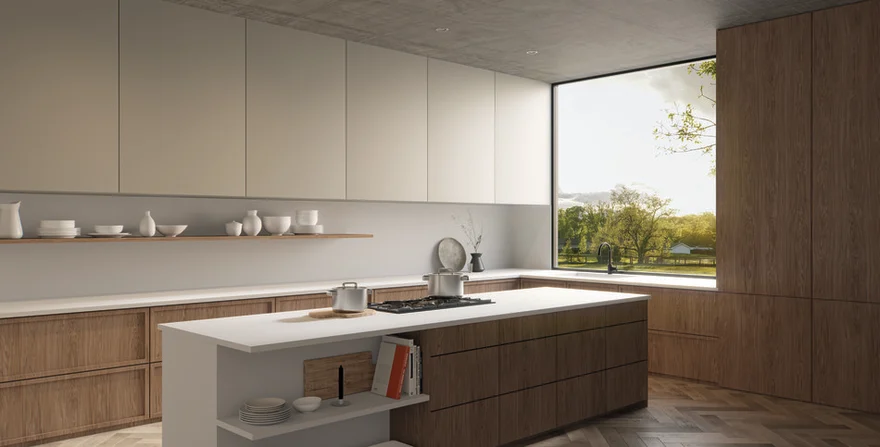Native landscaping, also known as natural landscaping, strategically uses plants that are indigenous to a specific region. These native plants can be artfully arranged in formal gardens or sown in a more natural meadow. They can also be combined with landforms and hardscape to direct, slow, and absorb stormwater. A native plant nursery provides insight into how native landscaping benefits urban settings. Here is more information about how native landscapes provide ecological solutions and savings:
Ecological and Financial Benefits
Established native plants require minimal irrigation, mowing, and chemical treatments, so native landscaping offers significant cost savings and environmental benefits compared to traditional landscape designs. From a conservation standpoint, native landscapes help improve air, soil, and water quality, prevent flooding from stormwater, control erosion, and enhance biodiversity. Additionally, these landscapes contribute to increased carbon sequestration and phytoremediation.
Native landscaping is a valued tool for sustainable urban development, a means to reintroduce an area’s natural heritage, and a powerful way to connect urban residents to the natural world while championing a conservation culture. Partnering with a native plant nursery can make native landscaping in urban areas more feasible.
Turf vs Native Landscaping Costs and Benefits
It is a misconception that native landscaping is more expensive than conventional landscaping. Native plants offer economic benefits and positive externalities beyond landscape installation and maintenance costs. The environmental services provided by native plants may include mitigating stormwater runoff and filtering fertilizers, preventing them from reaching water bodies. These services have real economic value that communities would otherwise have to pay for. For example, communities might have to pay for additional stormwater infrastructure or address excessive algae blooms.
Some benefits of native landscaping, such as reduced air pollution from less mowing, are challenging to quantify as economic values. When assessing the economic benefits of native landscaping, it is necessary to understand the environmental value of native landscaping. This value is often overlooked when analyzing installation and maintenance costs.
Installation and Maintenance Costs
Comparative studies of installation and maintenance costs for turf grass and native landscapes have shown that turf grass is more expensive than native landscaping. Variations in conditions from site to site can create exceptions. For residential sites that do not require irrigation systems, seeding turf can sometimes be cost-competitive with native landscaping. For large corporate campuses and residential developments with large common areas, native landscaping is more cost-effective.
A Midwest residential development calculated installation and maintenance costs for open spaces planted with turf grass and compared these with areas on the property planted with native prairie and wetland species. Over a ten-year period, costs per acre for turf versus native landscape were more than three times greater for installation and maintenance.
Public Perception of Native Landscaping
Public perceptions about native landscapes are influential when it comes to installing turf over growing native plants. Regular maintenance and thoughtful design for aesthetics and human interaction are key for native landscaping. Here is more insight into native landscaping in urban developments:
- Native landscapes in urban settings should be well-kept. A well-groomed area is assumed to be safe, and safety is a key concern for urban dwellers. Urban native landscapes also need to allow people to see through them; dense, overgrown landscapes are perceived as neglected and potentially dangerous.
- A native landscape that offers purpose might be seen as more acceptable in the public eye. Structures like fences, sidewalks, and viewing platforms indicate purpose. Picturesque curves and crisp edges and lines also have high appeal. A mown turf border further increases a native landscape’s acceptance.
- The size of the landscape matters. Studies also show that patches of at least an acre of native landscaping are more desirable than smaller ones. Researchers suggest that the presence of wildlife is also a plus as people place higher value on landscapes that provide habitats for butterflies and other wildlife. Flowering plants are more acceptable than non-flowering plants, whether they are native or not.
Partner With a Native Plant Nursery
Education about the environmental benefits of native landscapes is paramount. People living in cities often see well-maintained parks and gardens as natural, even though chemicals and fossil fuel emissions are required for maintenance and negatively impact stormwater runoff. Research shows that urban green spaces have psychological benefits, even when they don’t have ecological benefits.
Native plant nurseries grow hundreds of species of native plants from trees to perennials and grasses. They are produced using patented RPM-production technology. RPM production offers superior survivability and two times faster growth. Native species are necessary for restoring Earth’s ecosystem one tree at a time. Contact a native plant nursery during the planning phase of your project. They can give recommendations and information on native plant availability.











